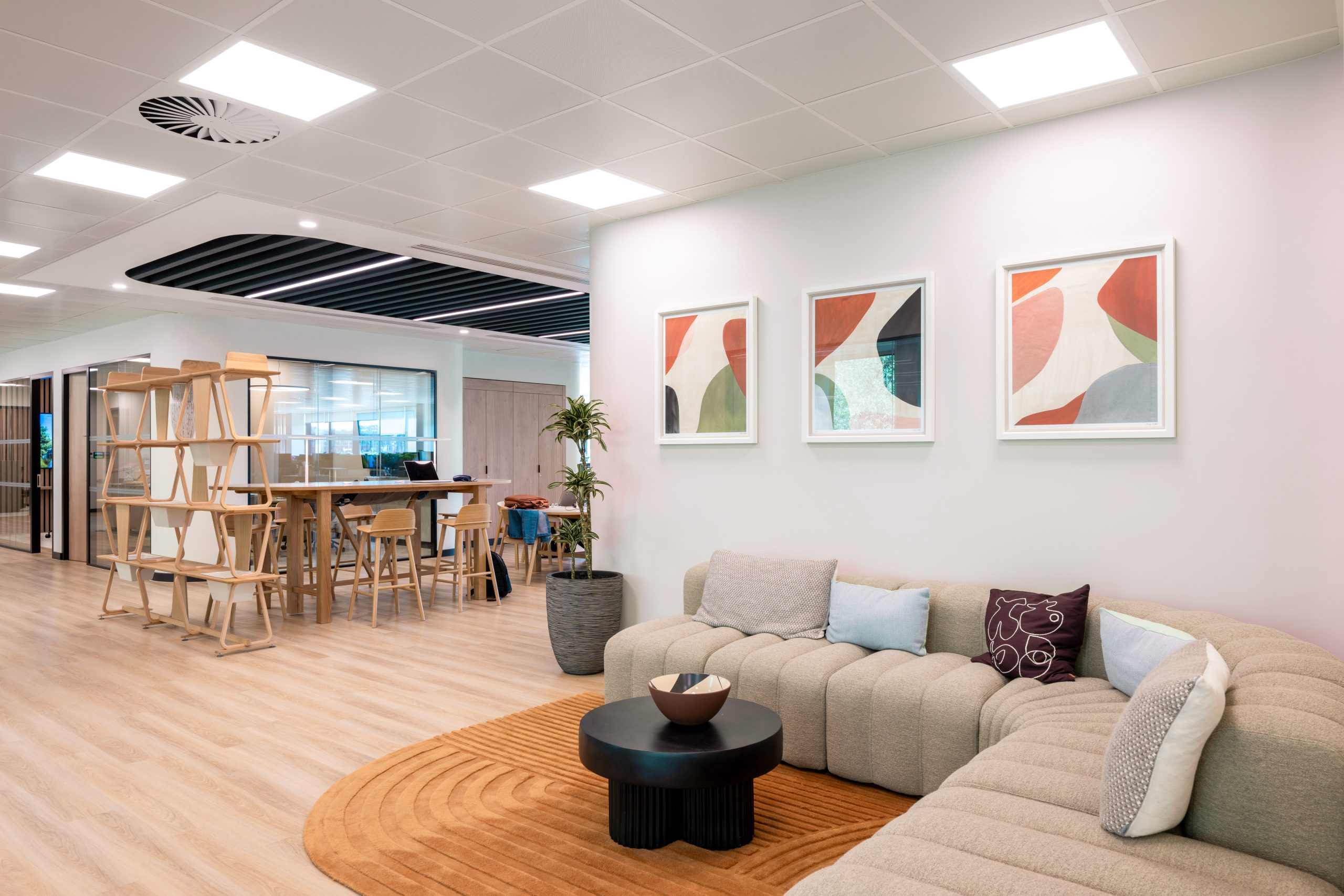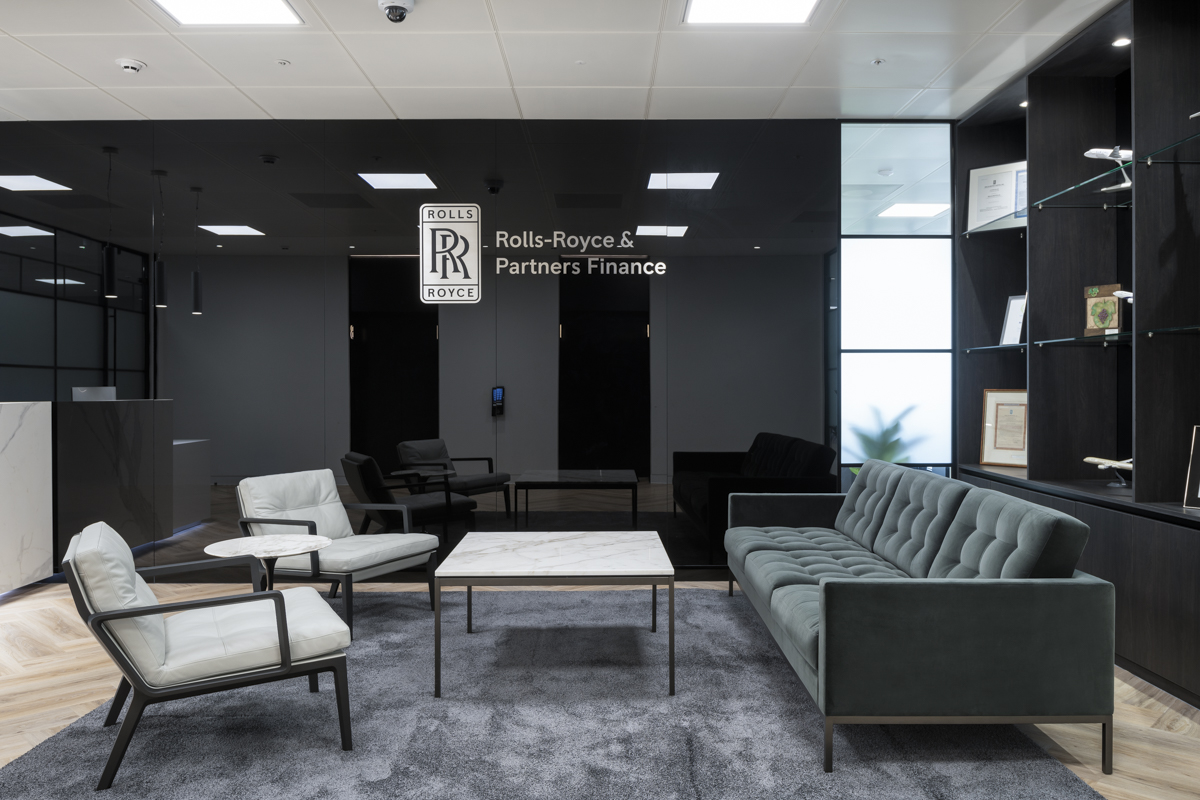As hybrid working becomes the new standard, office design has shifted towards creating spaces that balance privacy with collaboration. Employers want workplaces that provide both quiet focus and vibrant social interaction. For landlords and developers, this presents a clear opportunity: refurbishments and new fit-outs that embrace hybrid models are more attractive to tenants, command stronger rents, and future-proof assets in a rapidly evolving market.
In this article we explore what makes a hybrid work environment successful, the design features that matter most, and how case studies from our London office projects demonstrate the impact of balancing retreat and connection.

Why Are Hybrid Workplaces Now A Priority?
The pandemic accelerated flexible working patterns, but hybrid working is now driven as much by choice as necessity. Employees expect the office to complement remote work rather than replicate it. This shift is redefining the purpose of the workplace: it is no longer just a place to sit at a desk, but a destination that supports both retreat and connection.
For landlords, this means creating offices that feel relevant in a hybrid environment. Buildings designed only for rows of desks risk becoming obsolete. In contrast, properties with flexible layouts, integrated technology, and thoughtful amenity spaces are in high demand, particularly in London where competition for talent is fierce. The most desirable offices today are those that combine versatility with character, offering a workplace experience employees cannot replicate at home.
This redefinition of the office is more than a trend, it is reshaping long-term value. Assets that adapt quickly to hybrid expectations are rewarded with higher occupancy, stronger tenant demand, and better investor confidence.

What Features Define A Successful Hybrid Environment?
Hybrid offices are defined by their ability to accommodate different modes of work. The best environments provide a spectrum of settings, from quiet pods for deep concentration to open team zones and social spaces that encourage connection. Landlords who understand these dynamics can ensure their buildings meet the needs of today’s tenants and remain relevant for years to come.
Focus Pods And Quiet Retreats
In the world of hybrid, employees often come into the office to do work they cannot complete effectively at home. This can mean team-based activities, but it also includes deep, uninterrupted focus. Pods, booths, and small quiet rooms provide this retreat. They allow staff to step away from the buzz of the office and concentrate, take confidential calls, or work through complex tasks without distraction.
For landlords, integrating dedicated quiet areas signals an understanding of modern workstyles. It also future-proofs the building by ensuring it appeals not just to extroverted, collaborative teams, but also to the individuals who thrive in concentration-friendly settings. Done well, these retreats make an office more inclusive and versatile, boosting its letting appeal.
Team Zones For Collaboration
Collaboration remains the top reason employees travel into the office. Team zones provide the space and flexibility to host workshops, brainstorming sessions, and project work. These areas are increasingly designed with modular furniture, writable walls, and built-in AV to enable both structured meetings and spontaneous teamwork. For tenants, having collaboration space ready to use on day one avoids costly post-occupancy fit-outs.
From a landlord’s perspective, these zones transform a building into a strategic asset. They show prospective tenants that the office is more than square footage, it is a tool for innovation, creativity, and business growth. This perceived value translates directly into stronger rents and faster lettings.
Shared Social Spaces
The office is now competing with the comfort of working from home. To entice people back, it must offer more than desks and meeting rooms. Shared kitchens, breakout lounges, and café-style areas create a social dimension that remote work cannot replicate. These areas build company culture, encourage informal interaction, and foster the sense of community employees increasingly seek in the workplace.
Landlords who invest in high-quality social amenities elevate their properties from ordinary to aspirational. Well-designed social spaces make a building feel like a destination, not just an address. They also help tenants attract and retain staff, an advantage that occupiers are willing to pay for.
Together, these elements (focus pods, collaboration zones, and social areas) create the balance that defines a successful hybrid workplace. Landlords who weave them into refurbishments or new fit-outs are creating offices that tenants will actively seek out, ensuring stronger performance in competitive city markets.

Hybrid Office In Action: A Selection Of Case Studies
K2 Space has delivered a number of London office projects where the balance of retreat and connection was central to the design. These case studies illustrate not just the design interventions, but also the measurable impact on landlords and tenants alike.
Glenstone: Speed And Hybrid Readiness
For Glenstone Property, the brief was as much about speed as it was about design. The landlord needed to reposition the asset quickly to meet tenant demand, but without sacrificing long-term relevance. Hybrid principles provided the solution.
We introduced a mix of flexible team zones and breakout areas, allowing tenants to adapt the space for focus, collaboration, or social interaction. Crucially, the refurbishment was completed in record time, minimising void periods and bringing the building back to market faster than a conventional redevelopment.
As a result, Glenstone quickly secured new tenants who valued the ready-made hybrid environment. For the landlord, the project proved that rapid refurbishment can achieve both short-term occupancy gains and long-term resilience, positioning the building as a magnet for modern occupiers.
Global Innovation Institute: A Showcase Of Balance
A recent project of ours for a Global Innovation Institute exemplifies how careful design can create a benchmark hybrid environment. The brief called for a space that would attract innovation and position the building at the forefront of London’s knowledge economy.
We delivered a layered environment: technology-enabled collaboration zones, quiet pods for focus, and inspiring lounges designed for social interaction. The project also integrated sustainability features, including energy monitoring systems and biophilic design, aligning the building with tenant ESG priorities.
The result was a workplace that not only met occupier demand but also elevated the building’s profile in the market. Recognised as a model hybrid environment, the project demonstrated how refurbishment can unlock both tenant appeal and long-term asset value.

Why Does Hybrid Design Increase Asset Value?
The financial argument for hybrid design is persuasive. Offices that balance retreat and connection achieve higher rents, shorter voids, and stronger valuations. Tenants see the benefit of ready-made hybrid workplaces and are willing to pay a premium, while landlords gain more stable income and a future-proofed asset.
Rental Premiums
Research shows that hybrid-ready offices in central London often achieve rents on par with, or above, new builds. This premium reflects tenant demand for workplaces that enhance productivity, support culture, and demonstrate ESG commitment. For landlords, investing in hybrid upgrades means not just compliance but a competitive edge in the letting market.
Hybrid environments are also easier to market. Prospective tenants increasingly ask about focus areas, collaboration spaces, and wellness features during initial viewings. Properties that can demonstrate these immediately position themselves at the top of shortlists, creating the conditions for stronger rental agreements.
Reduced Void Periods
Hybrid upgrades also shorten downtime between leases. Properties that already balance focus and collaboration are faster to let, and tenants are more likely to commit to longer terms. For landlords, this reduces exposure to market uncertainty and delivers steadier income across cycles.

How K2 Space Can Help Landlords Deliver Hybrid-Ready Offices
K2 Space partners with landlords, asset managers and developers across London to deliver office environments that meet the expectations of hybrid working. From rapid refurbishment studies and space planning, to full design and build fit-outs, we help ensure every square foot works harder for tenants and generates stronger returns for landlords.
Our integrated team brings expertise in workplace strategy, sustainability, and furniture procurement. We create flexible layouts that balance collaboration, focus, and social interaction, supported by the technology and amenities occupiers now demand. The result is not just a modern workplace, but a resilient asset with improved marketability and long-term value.
If you are a landlord or asset manager seeking to reposition your building for hybrid demand, explore our landlord services or contact us to discuss how we can help you deliver hybrid-ready offices that attract tenants and maximise asset value.
